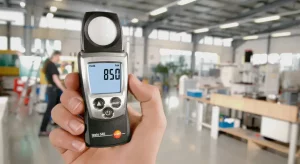Let’s assume you’ve found the perfect vehicle in Mexico—one you can’t find anywhere on U.S. soil. You’re a car enthusiast, not the kind of person to pass on a once-in-a-lifetime vehicle, so you’ll have to figure out how to bring it to the U.S.
Can you buy a car in Mexico and bring it across the border?
Yes, you can—but it’s not as simple as driving your new car there. There are a few more steps you’ll need to take.
First of all, determine how long you want to keep your car in the U.S.
If you’re a resident of Mexico and only looking to import your car temporarily, you may do so without paying duties. Your vehicle doesn’t need to meet U.S. safety and emission standards, but it must be exported within one year. There are no extensions for this time limit, and you cannot sell it within the U.S.
There’s another way to import your vehicle without any hassle. Are you using it for show or display? In these circumstances, you won’t need to pay duty fees, but the car cannot be driven on public roads, and it needs to be stored securely.
If you’re looking to permanently import a vehicle for personal use, the answer is a bit more complicated. A car produced in one country may not meet the emission or safety standards of another. On top of that, you can expect to pay duty fees for the import process.
Importing a car from one country to another is a hassle, but you’ve decided it’s worth it. What’s the first step? Here’s how to do it:
The Federalization Process
Before you can legally drive your new vehicle in the U.S., it must be compliant with safety, bumper, and emission standards. Basically, your car must be able to pass a safety inspection (meeting the Federal Motor Vehicle Safety Standards). Vehicles older than 21 years don’t need to meet emission standards.
Before you import a vehicle, ask yourself:
- Does it meet U.S. emissions standards?
- Would it pass a safety inspection?
- Do the bumper heights need to be adjusted?
We recommend looking up your exact car online to see if anyone else has imported it—take note of what they did. At the very least, you can find information about how to federalize cars with similar issues. And if you’re lucky, your vehicle won’t require extensive modifications before it’s ready to be imported.
How Much Will It Cost?
It’s the question you’ve been waiting for: What will it cost you to bring your car across the border?
In this section, we’re only covering duty and shipping fees. The cost of federalizing your car is another expense that will depend entirely on the type of car you’re buying.
Suggestion: Explore 9 Upcoming 2023 Cars That Are Worth The Hype
When it comes to paying duty fees, the costs vary depending on the size of your vehicle. If you’re importing a motorcycle, you’ll pay up to 2.4% in duty fees. Automobiles will be 2.5% of the vehicle’s total value. And large trucks will be a whopping 25%.
On top of that, you’ll need to pay to have your vehicle shipped to the U.S. Air freight is the fastest way but also the most expensive. Land and ocean transport are more affordable but take significantly longer.
How To Import a Vehicle From Mexico to the U.S.
Now that you understand the basics, we’re diving into the specifics. To import your vehicle, follow these steps:
Clean the exterior thoroughly
Did you know that foreign soil on your vehicle may contain pests? To prevent pests from being brought into the United States, you’ll be required to have your car steam-cleaned or detailed. Pay special attention to the vehicle’s tires and undercarriage.
Clean the interior
It might be tempting to store a few personal belongings in your vehicle, however, this is not recommended. Your belongings could be stolen while the vehicle is being transported. In addition, some shippers will refuse your vehicle if it contains personal items. Empty the car of all contents before shipping it.
Popular For You: 9 Best Underglow Light For Cars (Review) & Buying Guide
Gather the necessary documentation
You’ll need a list of paperwork to import your vehicle properly. Documents you need include:
- The Bill of Sale
- If you ship the vehicle, the Bill of Lading
- DOT Form HS-7 to prove safety compliance
- EPA Form 3520-1 to prove emissions compliance
- A title or other proof that you own the vehicle
- Manufacturer engine label with an eligible emissions certification
- Mexican registration
- Payment for duties, fees, and taxes
The owner of Breeze Customs writes, “If this process seems overwhelming to face alone, you can always work with a concierge business. They’ll help you with each step of the process, from determining whether your vehicle meets federalization standards to collecting the necessary documentation.”
Pay duty & shipping fees
Consider the cost of duty and shipping fees if you’re buying a new vehicle—once you factor them in, the deal you found may not be as good as you thought!
So, to answer your original question: Yes, you can buy a car in Mexico and bring it to the U.S. You’ll just need to make a few modifications to the vehicle, pay duty fees, and prepare it for shipping first. With this guide, we’ve aimed to make the process as straightforward as possible for you. Good luck!
Discover more from Locar Deals
Subscribe to get the latest posts to your email.







